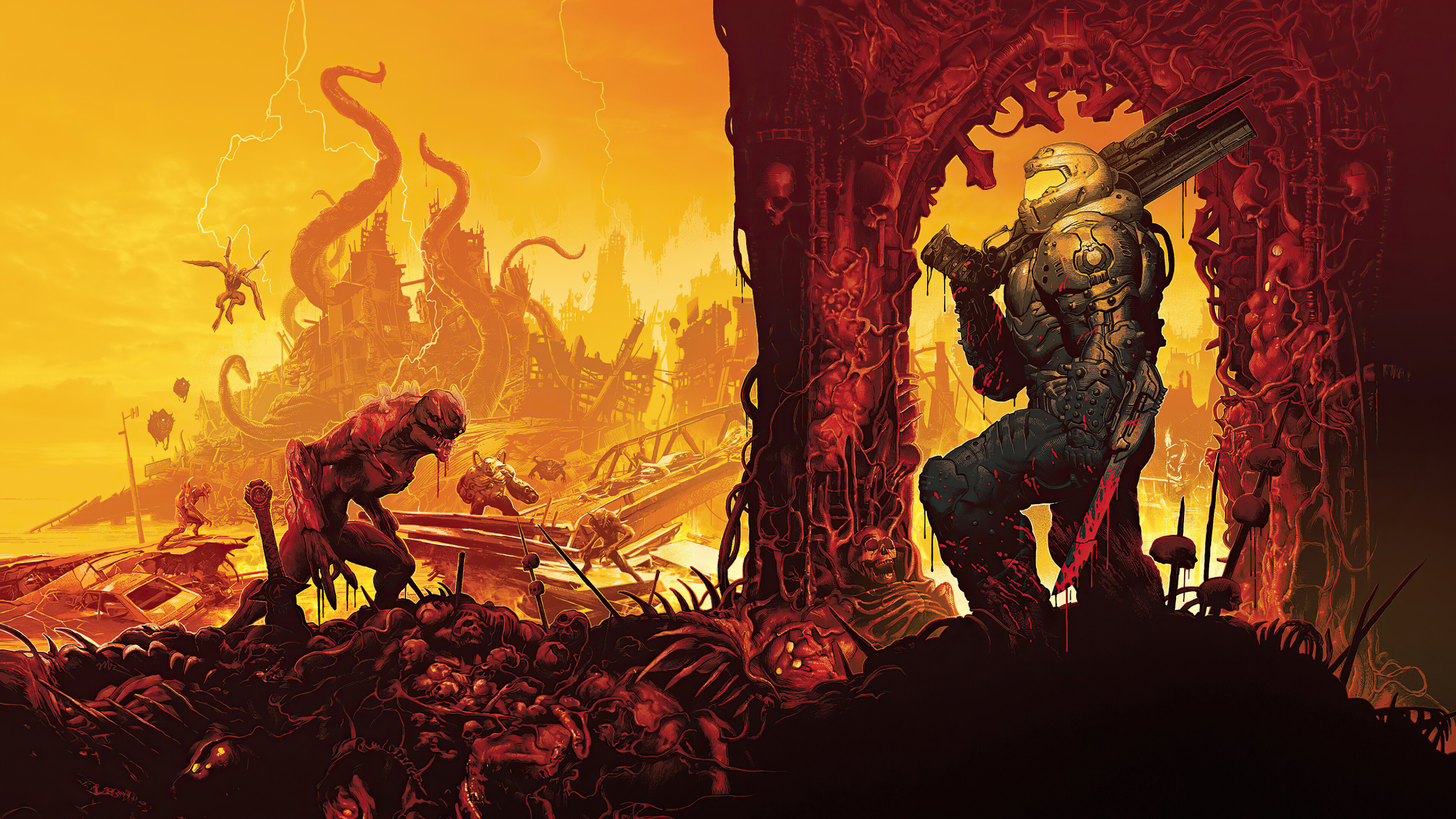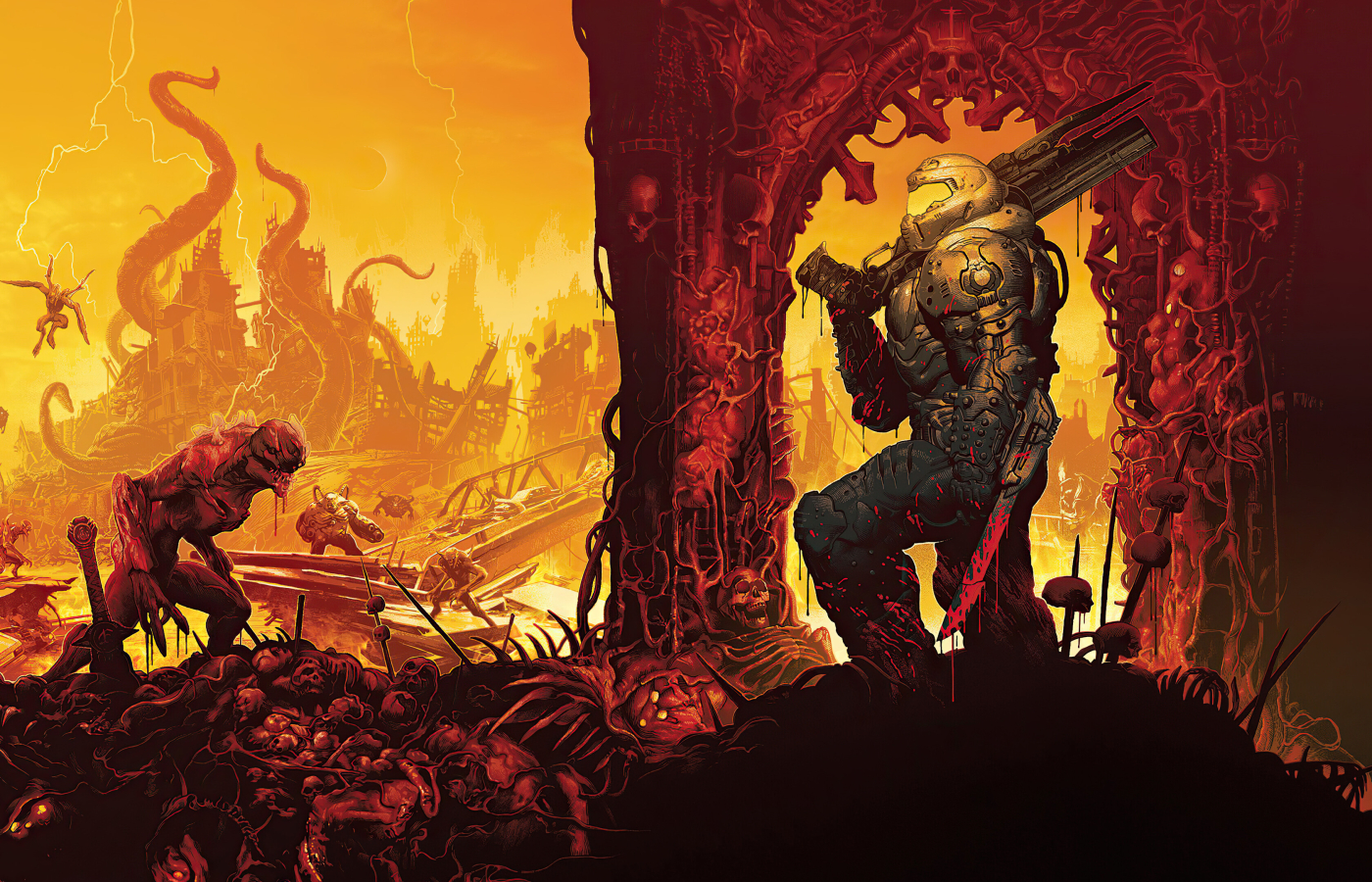

It won't take you long before you really start packing heat. Again, DOOM's flashy-looking demonic hordes are not packets of instant threat to the player, they're tools of providing the challenge.Īnytime you start a new game, all you have in your disposal is a wimpy pistol with fifty bullets and a fist adorned with a tiny gauntlet - probably the least useful items you'll encounter in DOOM. Then again, how well or poorly the enemies are utilised depends on the map design. Those who did grind through DOOM lots, however, see him more as a valuable tool to clearing up hordes of enemies, without Doomguy's direct involvement. Makes a fitting first impression when it blasts you right away. The other most imposing of the hell folk even among those who haven't played DOOM yet is, no doubt, the cyberdemon: a walking tower with horns, a rocket launcher and a mean demeanour. In particular, the arch-vile still strikes fear into the hearts of casual DOOM players - all he really needs is to cover their screen in flames.

But that's where DOOM II's additions come in, with every new mid-tier enemy having an attack pattern that isn't "a slow fireball flying straight on". True, some demons are still nothing but beefed-up versions of the imp: both the baron of hell and his little brother hell knight take longer to kill, while cacodemons can also fly.

The list of possible combat scenarios goes on. They may get close and personal so you could accidentally die by your own rocket. They may take up space you need to dodge the projectiles. They may deal lots of damage you can easily avoid. Or the flaming flying skulls, known as lost souls, who would take every opportunity to ram you.ĭOOM's enemy design doesn't take lots of notes from its predecessor, Wolfenstein 3D: you can tell who takes a bigger beating, but that doesn't mean they'll always be priority targets. Or the thick-skinned pinky demons, who can only roam around and chomp your face off - yet become very dangerous in droves or when you encounter their invisible counterpart, - the spectres.
Doom eternal poster skin#
This kind of balancing is preserved all throughout, with hellspawn like the brown and spiky imps: slightly harder to gun down, throw slowly-flying fireballs and can scratch your skin off should you get too close. Their humanoid silhouettes can be made out from 20 miles away, and you can easily snipe them from the same distance, killing them in one or two gunshots, - that being said, so can they: in a pinch, shotgun zombies and chaingunners can very easily turn you into mincemeat, should they fire at you from across the level.

While it doesn't take much effort to copy the HUD and the space marine angle, getting the nuances of how the weapons work and how the enemy roster's made up is a lot more complicated - not to mention more vibrant than what's in your layman FPS title.įor instance, anywhere else, you'd expect zombies to be somewhat slow, limping braineaters. Imitators followed, trying to emulate as much of its success and visuals as possible, but only a few of them understood what makes it tick, let alone succeeded themselves. But how so? Why does it hold up so well, and why do people keep coming back to an old DOS-era game? There's many factors to it, so sit tight.ĭOOM's iconography became synonymous with first person shooters as a whole even back in 1994, when the genre was known more as either "3D Action" or "DOOM clone".
Doom eternal poster mods#
With many iterations, ports to different platforms, mods of every shape and colour and, at one point in time, an active competitive scene, DOOM really is a phenomenon that left a lot of legacy behind it, and has even more surprises ahead of us. As the original 1993 DOOM is nearing its 30th anniversary, it's likely a good idea to remember what exactly makes it "the video game equivalent of Thriller", in the words of Civvie 11.


 0 kommentar(er)
0 kommentar(er)
